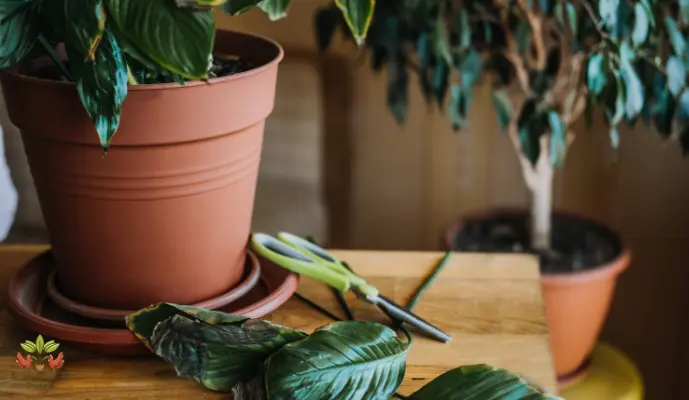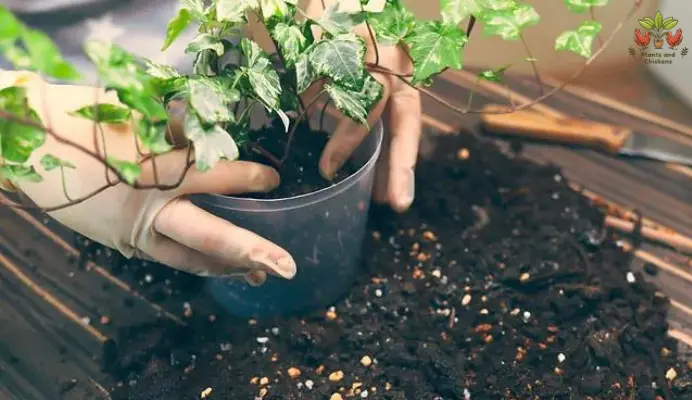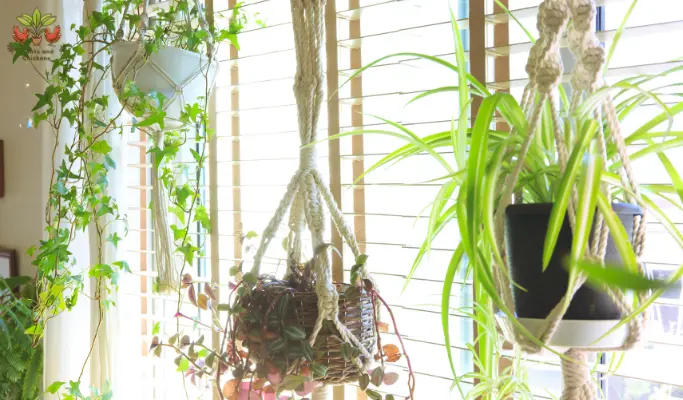Indoor ivy plants can be a beautiful addition to any home or office. Their lush green leaves can bring a touch of nature indoors and add a sense of tranquility to the space. However, if you’ve noticed that your indoor ivy is not looking its best and is in fact indoor ivy dying, don’t worry! There are easy ways to revive your indoor ivy plant and bring it back to life.
Table of Contents
Common Causes of Ivy Plant Decline
Before we discuss how to revive your indoor ivy plant, let’s take a look at some common causes why indoor ivy dying:
Lack of water: Ivy plants require adequate watering to thrive. If you’ve been neglecting to water your plant regularly, it can lead to its decline.
Overwatering: On the other hand, overwatering is equally harmful to ivy plants. It can cause root rot and prevent the plant from absorbing necessary nutrients.
Insufficient light: Ivy plants need bright, indirect light to grow. If your plant is not getting enough light, it can result in stunted growth and yellowing leaves.
Lack of humidity: Ivy plants prefer humid environments. If the air in your home or office is too dry, it can cause the leaves to become dry and brittle.

Reviving Your Indoor Ivy Plant
Now that we understand the common causes of indoor ivy dying, let’s explore easy ways to revive them:
1. Adjusting Watering Routine
If you haven’t been watering your indoor ivy plant enough, it’s crucial to start watering it regularly. Check the soil moisture level and water the plant when the top inch of the soil feels dry to the touch. However, be cautious not to overwater the plant, as it can lead to root rot. It’s best to maintain a balance and ensure the soil is moist but not soggy.
2. Providing Adequate Light
Ivy plants thrive in bright, indirect light. Place your indoor ivy near an east-facing window where it can receive gentle morning sunlight or a few feet back from a south- or west-facing window. If your ivy is not getting enough light, consider using artificial grow lights to supplement the natural light.
3. Increasing Humidity
Ivy plants prefer humid environments, so it’s essential to increase the humidity around your indoor ivy. You can achieve this by placing a small humidifier nearby, creating a pebble tray filled with water, or misting the plant regularly. These methods will help create a more humid microclimate around the plant and prevent indoor ivy dying.

4. Trimming And Pruning
If your indoor ivy dying because of plant has yellowing or browning leaves, it’s a good idea to trim off these damaged parts. Use sharp, clean pruning shears to remove any dead or diseased leaves, stems, or branches. This will encourage new growth and improve the overall appearance of the plant.
5. Fertilizing The Plant
Proper fertilization is essential for the health and vitality of indoor ivy plants. Use a balanced, water-soluble fertilizer specifically formulated for houseplants. Follow the instructions on the packaging to apply the fertilizer at the recommended intervals. Fertilizing will ensure that your indoor ivy is receiving the necessary nutrients to grow and thrive.
Types of Ivy Houseplants
There are several popular types of ivy houseplants that you may consider for your indoor space:
| Types | Description |
| Common ivy | A classic ivy variety with dark green leaves. |
| Devil’s ivy | A trailing ivy with heart-shaped leaves that are marbled with yellow or white. |
| Boston ivy | A climbing ivy with large, lobed leaves that turn brilliant red in the fall. |
| Swedish Ivy | A compact variety with small, round leaves that are often variegated. |
| Hedera canariensis | A Canary Island ivy with large, glossy leaves. |
| Persian ivy | An exotic ivy with deep green, leathery leaves and attractive veining. |
These are just a few examples of the many ivy varieties available, each with its own unique characteristics and beauty.
Frequently Asked Questions On Why Is My Indoor Ivy Dying Easy Ways Revive Your Indoor Ivy Plant
How Do You Bring Indoor Ivy Back To Life?
To bring indoor ivy back to life, increase humidity by using a humidifier, pebble tray, or misting it. Avoid overwatering and provide indirect bright light. If leaves turn brown, trim them and adjust watering. Ivy prefers slightly cooler temperatures and regular misting.
How Do You Restore An Ivy Plant?
To restore an ivy plant, give it a splash of water if it wilts from missing a watering. Avoid overwatering and keep the soil slightly dry rather than too wet. Provide indirect bright light from an east-facing window or a few feet away from a south- or west-facing window.
Avoid excessive light to prevent brown crispy leaves.
How Do I Make My Ivy Plant Happy?
To make your ivy plant happy, follow these steps:
– Provide bright, indirect light.
– Keep the soil moist, but avoid overwatering.
– Increase humidity by misting the plant regularly.
– Trim off brown and crispy leaves.
– Avoid extreme temperatures and drafts.
By following these guidelines, you can ensure the health and happiness of your indoor ivy plant.
Why Has My Indoor Ivy Gone Crispy?
Overwatering causes indoor Ivy leaves to turn brown and crispy. Trim off brown leaves and reduce watering. Provide indirect bright light. Boost humidity with a humidifier or misting.
Conclusion
Indoor ivy plants can bring life and vibrancy to any indoor space. If you find that your indoor ivy plant is dying, consider adjusting your watering routine, providing adequate light and humidity, trimming and pruning as needed, and fertilizing the plant regularly. By following these easy steps, you can help revive your indoor ivy dying and enjoy its beauty for years to come.


![Terrifying Trend: Why Do Roosters Chase Humans? [2024]](https://plantsandchickens.com/wp-content/uploads/2024/02/why-do-roosters-chase-humans-4.webp)


Leave a Reply